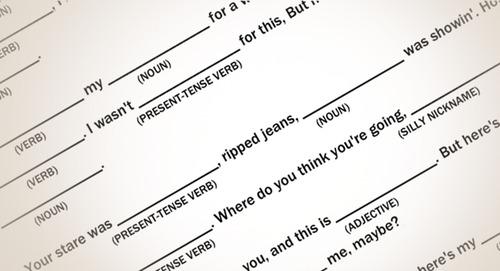
Mad Libs is the weird little word game where players plug in parts of speech to spontaneously end up with a story. It was invented in 1953 when Leonard Stern and Roger Price were working on a script for the classic sitcom, The Honeymooners.
Stern was attempting to describe a character’s nose, but couldn’t think of an adequate description:
I said, “I need an adjective that—" and before I could further define my need, Roger said, “Clumsy and naked." I laughed out loud. Roger asked, “What’s so funny?" I told him, thanks to his suggestion, Ralph Kramden now had a boss with a clumsy nose—or, if you will, a naked nose. Roger seldom laughs, but he did that time, confirming we were on to something—but what it was, we didn’t know.
But what exactly makes the fill-in-the-blank game so funny? Most of the humor can be explained by the following linguistic concepts at play:
- Selectional restrictions: The sentence “the building is sleepy" sounds funny because it violates fundamental restrictions. The “building" defies the selectional restriction of the predicate “sleepy," leading to a silly disparity.
- Word sense ambiguities: Ambiguous words like “cold" have several interpretations, and could refer to a disease, a temperature, or an environmental condition. This ambiguity adds an extra element of surprise when swapping in words to complete a Mad Libs story.
- Semantic anomalies: A phrase like "colorless blue marbles" obeys all of the syntactic rules of English, yet the semantic inaccuracy of both “colorless" and “blue" together make it anomalous. Hilarious.
Mad Libs linguistics is pretty ____, don’t you think?
(via Mad Libs & Language Log)
